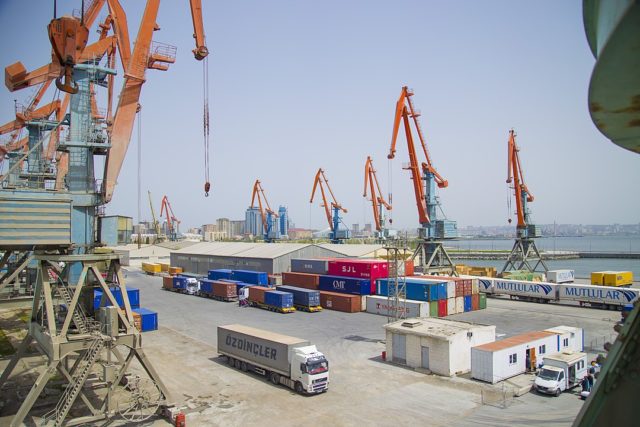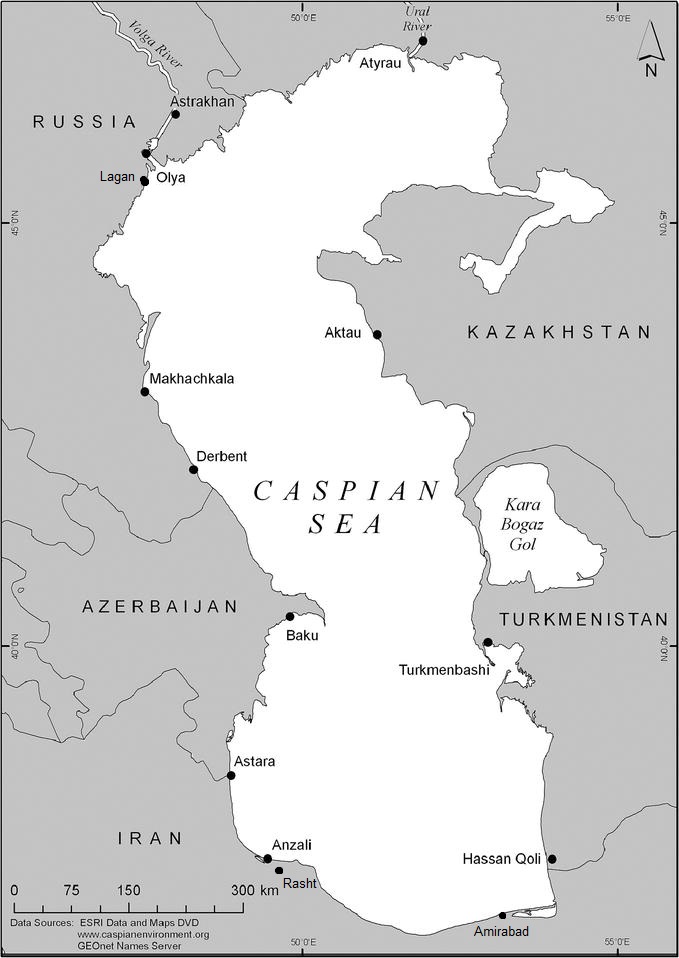
Competition Among Ports in the Caspian Sea and the Significance of the Port of Baku
Publication: Eurasia Daily Monitor Volume: 17 Issue: 145
By:

On July 29, the Russian government issued an order concerning plans for the development of federal transport, railway, information and communications infrastructure that includes the construction of Port Lagan, in the Republic of Kalmykia (Portnews.ru, August 3). The idea to establish a port in Kalmykia has been discussed since 2007, and a letter of intent on the construction of a new seaport in Lagan was approved in July 2019. The total projected transshipment capacity of the port will reach 12.5 million tons, which is 5 million tons more than the total capacity of the three other Russian ports on the Caspian Sea—Astrakhan, Makhachkala and Olya (Global Construction Review, August 3). By utilizing the new port, Russia will be able to increase its trade with Iran, India and China through the International North-South Transport Corridor (INSTC). Therefore, some Iranian and Chinese companies are also interested in investing in the project.
Currently, Russia’s main port in the Caspian Sea, Astrakhan Port, does not meet all international standards as it cannot handle large ships and is subject to continual silting of the mouth of the Volga River (Russia-briefing.com, August 6). Also, in recent years, the total traffic level of the Russian ports in the Caspian Sea has been dwindling (see EDM, May 23, 2017), thus encouraging Russia to work on new port projects in order to maintain its competitiveness in the region. The other problem for Russia’s Caspian ports is that they freeze in winter. By becoming Russia’s only ice-free port in the Caspian Sea, the Port of Lagan, if built, would eliminate this obstacle and handle cargos all year round.

Russia is not the only country working on new port projects in the Caspian. In 2017, Iran launched development projects in Amirabad Port, situated on the southern coast of this inland body of water (Financial Tribune, April 12, 2017). The Iranian efforts aim to increase the port’s capacity and connect it to the broader domestic rail network. Turkmenistan, in turn, opened the new Turkmenbashi Sea Port in 2018 and invested about $1.5 billion for its construction (Caspian News, May 5, 2018). Another Caspian littoral country in Central Asia, Kazakhstan, inaugurated the port of Kuryk, on the eastern coast of the Caspian Sea, that same year, which will increase transit revenues up to $5 billion a year (Astana Times, August 14, 2018).
Although each of the above-mentioned new ports has great cargo-processing capacity, the largest such project in the Caspian basin is Azerbaijan’s Baku International Sea Trade Port (Port of Baku). The inauguration of the port took place in 2018; and when construction is fully complete, the trade port will have the capacity to process 25 million tons of general cargo and receive 11 vessels at the same time (Ady.az, May 14, 2018). Following the completion of the first phase in 2018, the Port of Baku already has a total cargo processing capacity of 15 million tons, including 100,000 twenty-foot equivalent unit (TEU) containers (Azernews, April 16, 2019 ).
Baku International Sea Trade Port is situated in the Alat settlement, 70 kilometers south of Baku city, where the main railway and highway networks of Azerbaijan converge (Trend.az, June 22). Using this port, cargos coming from Asia are able to directly connect to the Baku–Tbilisi–Kars (BTK) Railroad and reach Europe in less than a week. Owing to the great advantages of its location, the new port is becoming the largest transportation and logistics center in the Caspian basin and promises to create favorable conditions for expanding cooperation between the Caspian littoral states while enabling the full operation of north–south and east–west transportation corridors.
The efforts of all the Caspian littoral countries to establish and develop such transportation ports are related to the growing importance of international transit projects such as the Trans-Caspian International Transport Route (TCITR) and the INSTC. By developing their transportation infrastructure, these countries are endeavoring to become major mediators in the transit of cargos between Europe and Asia, two main energy-consuming markets. The ambition of each to become the main transport hub in the region is also creating a competitive environment in the Caspian Sea.
However, among the Caspian littoral states, Azerbaijan has the upper hand in this competition. First, it has already established all the necessary infrastructure, such as railways, highways and the port itself. The Port of Baku and the BTK have, together, created the shortest route in an east–west direction that enables cargos coming from China to reach Europe within 12 days (Caspian News, March 10, 2018). Within the framework of the INSTC, Azerbaijan is also closely cooperating with Iran, including in work on the Rasht–Astara Railroad, which connects the capital of Iran’s Gilan Province and the border city of Astara, in Azerbaijan (Financial Tribune, December 14, 2019).
Second, Azerbaijan has an advantage relating to its geographical position, which enables it to participate in both north–south and east–west transportation corridors. In the cases of Kazakhstan and Turkmenistan, their locations are suitable only for participation in the TCITR, and their ports are mostly used for cargo transportation along that route. On the other hand, Iran and Russia mostly cooperate within the INSTC in order to establish a direct link through the Caspian Sea, thereby avoiding dependence on the land routes of the South Caucasus in winter.
Furthermore, the future of the Port of Lagan, which could become a main competitor of the Port of Baku, is in question, as it will require huge financial outlays ($1.6 billion) and take a long time to build (Caspian Policy, August 5). Currently, Russia and Iran, despite their high interest in the construction of this port, do not have sufficient monetary resources to complete the Lagan project. Whereas, China, another potential source of funding, currently finds it convenient to use the existing infrastructure in Azerbaijan rather than investing in the prospective Lagan port and waiting for its completion. For all these reasons, the Port of Baku is likely to remain the most advantageous port in the Caspian Sea for the foreseeable future in terms of connecting all of the regional transport projects, thus creating huge potential for Azerbaijan to cement its position as the region’s main transportation hub.



